In Search of Chlorophyll
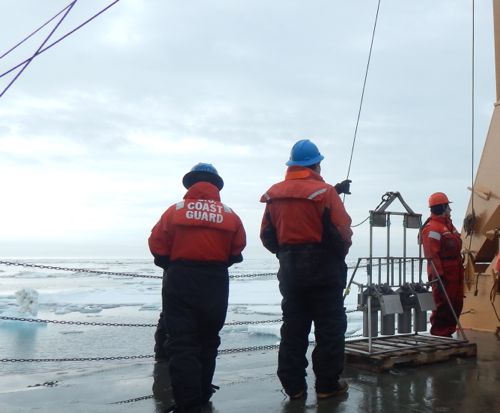
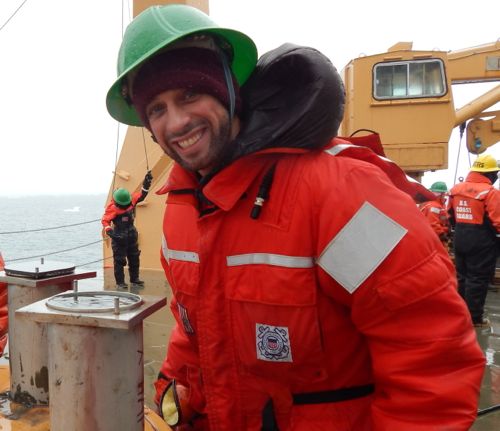
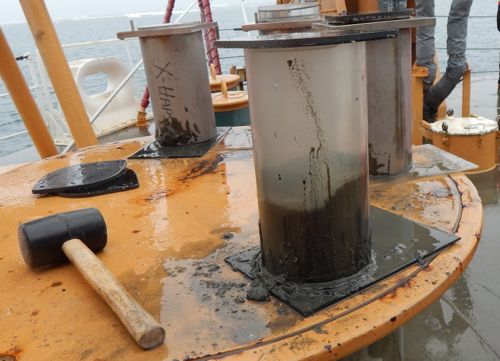
The Haps core...one of many types of devices used to collect sediment/mud. Philip Bucolo is a post doc in the Dunton lab working on a number of projects. One project focuses on the biogeochemical processes of the microalgae inhabiting the upper 2 mm of the ocean floor. Scientists from the University of Maryland and the University of Texas have previously found that sediments of the Chukchi Sea contain chlorophyll a, a photosynthetic pigment present in all plants and algae. Philip is interested in the viability of the microphytobenthos and whether these microalgae have the ability to undergo photosynthesis. Photosynthesis is the process of converting CO2 to usable sugars for growth and metabolism of the organism while releasing O2 as a by-product. Philip is testing whether the microalgae living on the bottom of the Chukchi Sea actively photosynthesize at light levels that are less than 1% of what plants need to sustain growth. He measures photosynthetic potential with a Pulse Amplitude Modulated Fluorometer (PAM), which measures the algae's ability to harness light to drive the photosynthetic reaction. He is also interested in the fate of chlorophyll produced by benthic microalgae in the food web. If the bacterial community uses chlorophyll, the pigment is transformed into phaeophytin, but as animals breakdown the chlorophyll, the pigment is transformed into phaeophorbide. Sediment cores collected aboard the Healy will be frozen and transported back to University of Texas Marine Science Institute where they will be analyzed to calculate how much chlorophyll has already been assimilated by sediment bacteria.. It is like the forensics of the sea for the base of the food web!
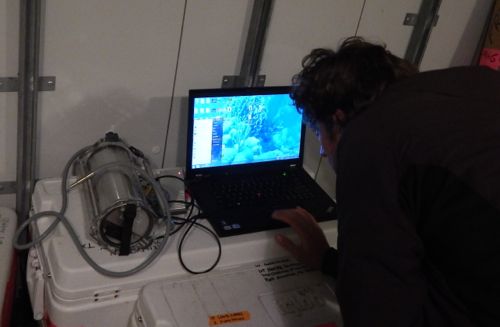
Oxygen Levels...

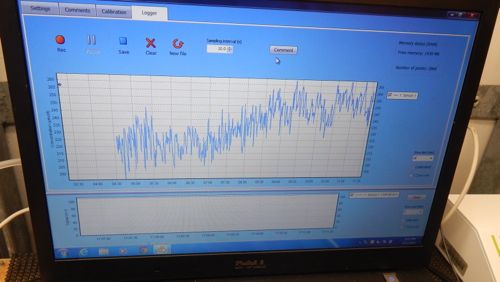
Nathan McTigue, a PhD student in the Dunton Lab, is working on nutrient biochemistry under the supervision of Dr. Amber Hardison. (Nathan will do his post doc in the Hardison Lab.) Nitrogen transformations in the sediment differ whether oxygen is present or not. When oxygen is not present, the environment is referred to as anoxic. The "Dead Zone" in the Gulf of Mexico is a region characterized by frequent hypoxic (very low oxygen) and anoxic conditions. Amber has a specialized piece of equipment to measure this very thing. It looks like a glass tube the size of a pencil with a tip that ends with a 50 micron probe (1000 microns make one millimeter) or the diameter of a human hair. Three tests are manually conducted on each of their core samples at a couple of centimeters depth. These "oxygen profiles" are measured at every station and are used to interpret how nitrogen is transformed in Chukchi Sea sediments.


Comments